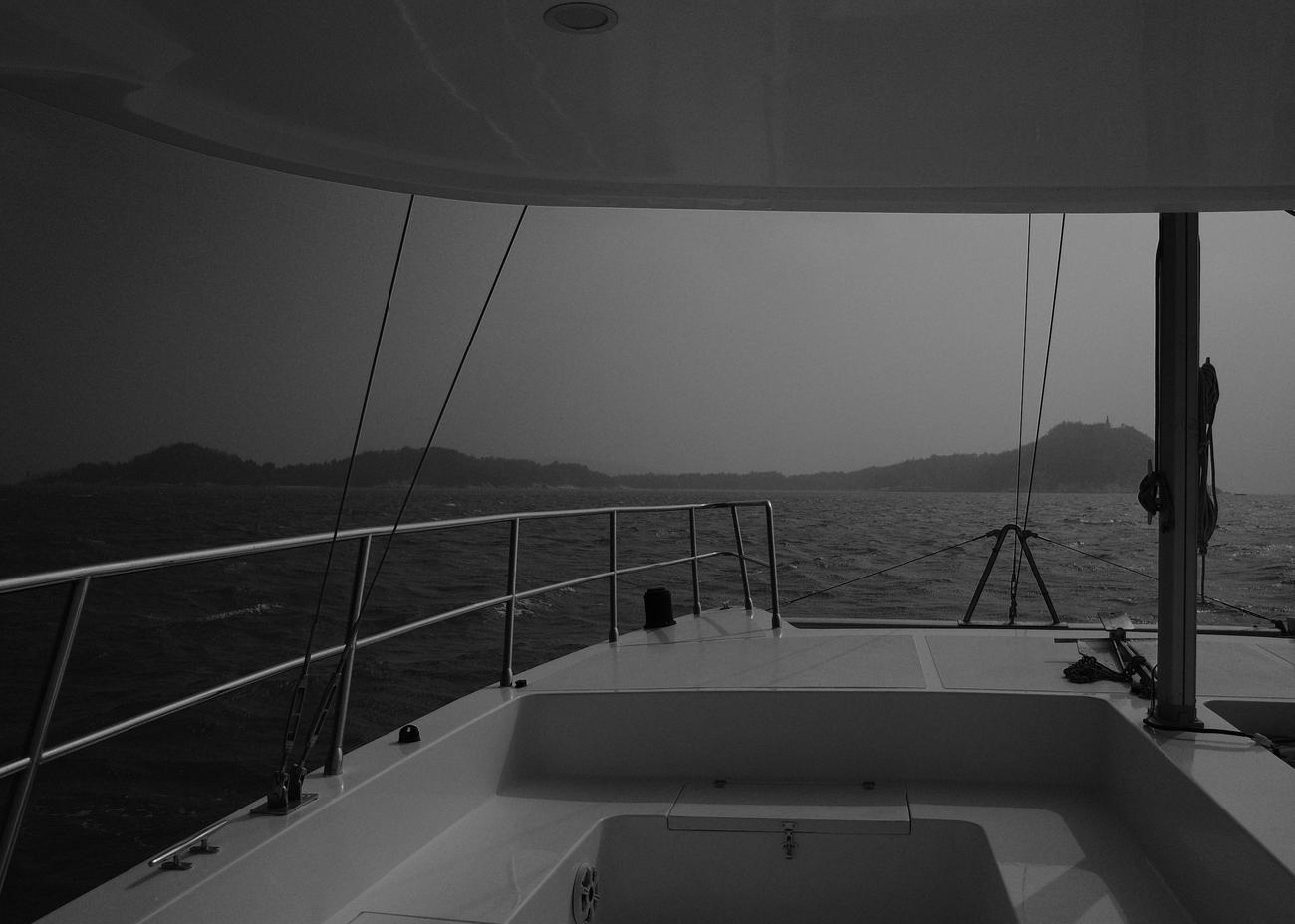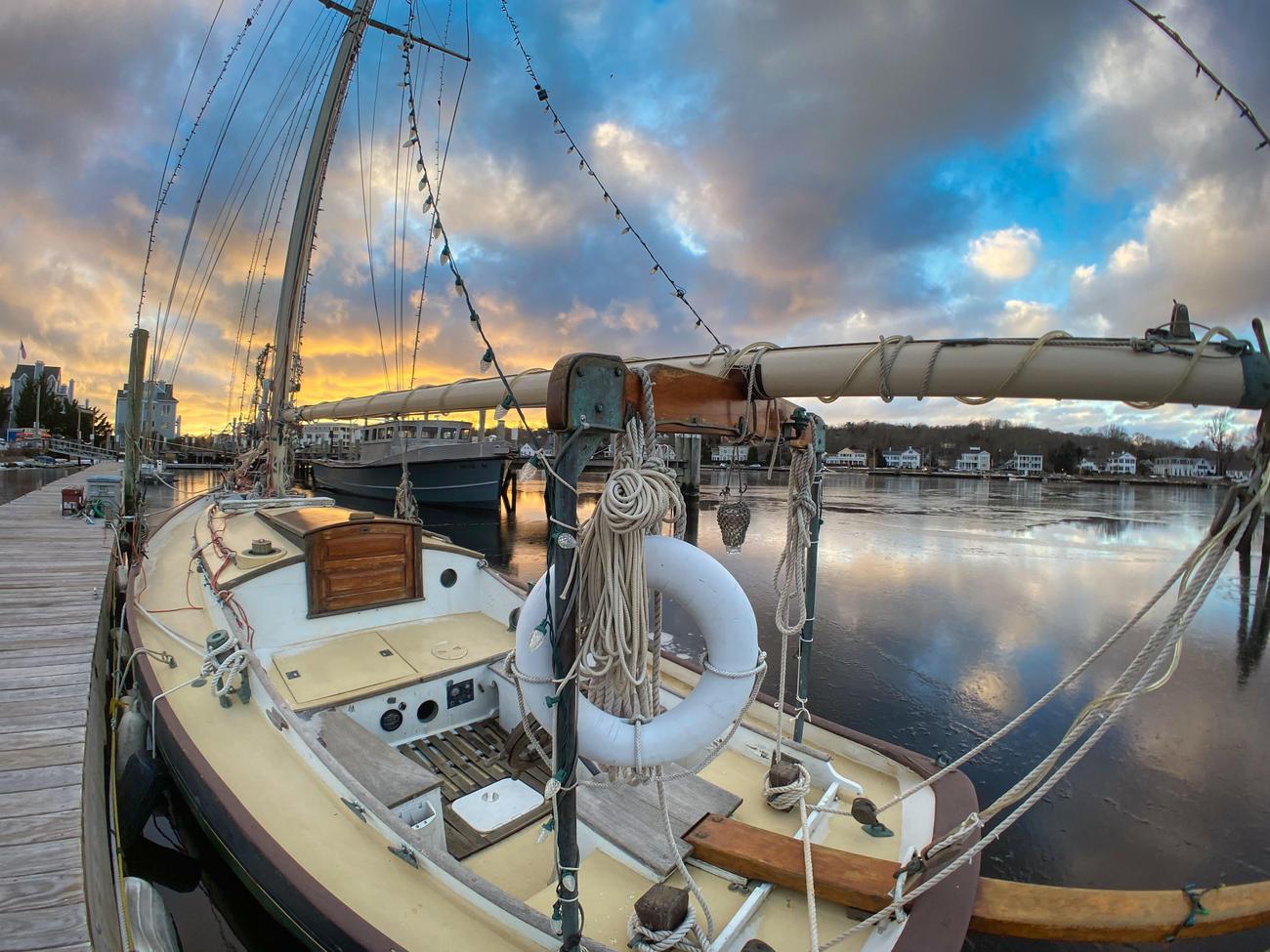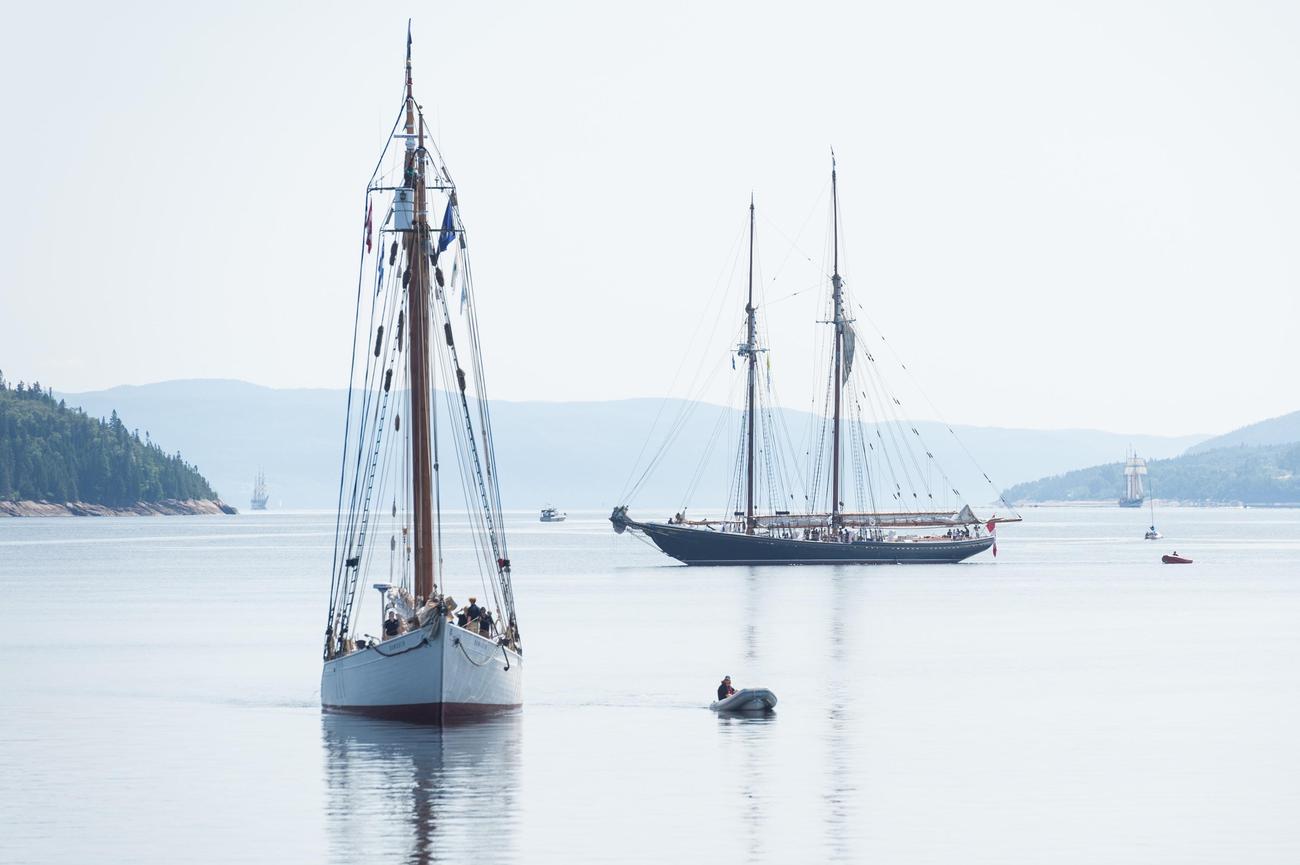Unraveling Sailboat Speed: How Fast Do Sailboats Go?

Embarking on the open seas, where the wind is your ally and the waves your playground, sailing offers an unrivaled experience of freedom and adrenaline. Whether you’re a seasoned sailor or a curious landlubber, the question of how fast sailboats can actually go is likely to pique your interest. As a highly experienced marine enthusiast and competitive yacht racer, I have spent countless hours on the water, chasing the wind and harnessing its power to push sailboats to their limits. In this article, we will delve into the fascinating world of sailboat speed, exploring the factors that contribute to their impressive velocity and the secrets behind their exhilarating cruising capabilities. So, fasten your lifejackets and prepare to set sail on a captivating journey to unveil the true potential of sailboat speed.
How Fast Do Sailboats Go?
Sailboats hold an undeniable allure with their graceful gliding across the water, driven by the power of the wind. But just how fast can these vessels really go? Well, it depends on a variety of factors, from the type of sailboat to the shape of its hull, and even the wind conditions. So, let’s delve into the intricacies of sailboat speed and unravel the secrets behind their impressive performances on the water.
The Need for Speed: Racing vs. Cruising Sailboats
When it comes to sailboat speed, we can distinguish between racing and cruising sailboats. Racing sailboats are purpose-built for maximum velocity, designed to sprint across the water at exhilarating speeds. On average, racing sailboats can reach a speed of 15 knots or approximately 17 mph. That’s quite a thrilling experience!
On the other hand, cruising sailboats prioritize comfort and leisurely sailing. While they may not be as fast as their racing counterparts, cruising sailboats typically maintain a more relaxed pace. Their average speed ranges from 4 to 6 knots or around 4.5 to 7 mph, with a top speed of 7 knots or approximately 8 mph. These slower speeds allow for a more enjoyable and leisurely sailing experience, perfect for taking in the scenery and enjoying the journey.
Unlocking the Secrets: Factors Affecting Sailboat Speed
Achieving optimal speed in a sailboat involves a combination of factors. One crucial concept to understand is hull speed. Hull speed represents the theoretical maximum speed at which a sailboat can efficiently travel without its bow being significantly lifted out of the water. It is determined by the boat’s length and can be calculated using a simple formula: Hull Speed (in knots) = 1.34 x √(Waterline Length (in feet)). This formula allows sailors to estimate the maximum efficiency of their sailboats.
While hull speed gives us a general idea, it doesn’t tell the whole story. The shape and design of the hull also come into play. A sleek, streamlined hull minimizes drag and allows water to flow smoothly around it, resulting in higher speeds. Think of it like a sleek sports car cutting through the air effortlessly, compared to a clunky, boxy car struggling against wind resistance.
Riding the Waves: The Impact of Wind and Water
Waves, those majestic formations rising and falling in the water, factor heavily into sailboat speed and safety. When a sailboat encounters waves, it can slow down significantly, especially if the wave’s length exceeds the boat’s size. In essence, a sailboat can’t outrun a wave that’s longer than itself. The interaction between the boat and the wave creates a dynamic that hinders the sailboat’s speed.
But it’s not all doom and gloom! Waves can also provide a powerful boost to sailboat speed. Imagine surfing down the face of a wave, harnessing its energy to propel the sailboat forward. This exhilarating experience can give sailboats an exciting speed boost, but it requires skill and precision to navigate effectively.
Type Matters: Monohulls vs. Catamarans
When it comes to sailboat speed, the type of boat also plays a significant role. Monohull sailboats, traditionally built with a single hull, offer stability and efficiency. However, catamarans, with their twin hulls, have a distinct advantage in speed. These sleek and innovative designs can provide a speed advantage of 25% to 30% over monohulls. The two hulls reduce drag, allowing the catamaran to slice through the water with less resistance, resulting in higher speeds.
Pushing the Limits: Record-Breaking Sailboat Speed
For those seeking ultimate speed thrills, there have been remarkable demonstrations by record-breaking sailboats. The fastest sailboat speed ever recorded is an astonishing 68 knots, which is approximately 78 mph. Just envision the sensation of hurtling across the water at such an incredible velocity!
The Final Verdict: Factors at Play
As we’ve explored, several factors contribute to the speed a sailboat can achieve. Wind conditions, sail area and design, hull shape, and even the interaction with waves all play a critical role. Each sailor, whether racing or cruising, must navigate these variables to optimize their sailboat’s speed and performance on the open water.
So, the next time you find yourself pondering how fast sailboats can go, remember that it’s not just a straightforward answer. Sailboat speed is a complex interplay of design, conditions, and skill, all coming together to create a thrilling and awe-inspiring experience on the water.
“The speed of a sailboat is a dance between wind and wave, where the sailor becomes the conductor, orchestrating the symphony of elements to unlock the boat’s true potential.”
Sailboats are fascinating vessels that have been used for centuries to explore the open waters. Whether you’re a seasoned sailor or simply intrigued by the sea, there are countless facts about sailboats that are sure to captivate your interest. From their intricate designs to their rich history, sailboats offer a unique perspective into the world of maritime travel.
If you’re looking to learn more about these majestic boats, we’ve compiled a comprehensive list of facts about sailboats that you won’t want to miss. Discover the different types of sailboats, delve into the physics behind sailing, and explore the various techniques used to navigate these incredible vessels. Are you ready to set sail on a voyage of knowledge?
Click here for a full list of facts about sailboats and prepare to be amazed by the wonders of the sea: facts about sailboats
How Fast Can a Foiling Sailboat Actually Go?
[youtube v=”SWGBgR_Np3E”]
Introduction
Racing sailboats can reach impressive speeds, while cruising sailboats have a more modest pace. Hull speed and hull design play crucial roles in determining a sailboat’s speed. Waves can either slow down or provide a speed boost, depending on how the boat interacts with them. Additionally, different types of sailboats, such as catamarans, offer advantages in terms of speed. The fastest recorded sailboat speed to date is an impressive 68 knots.
Foiling: The Need for Speed
Foiling refers to a technique where a boat’s hull is lifted out of the water by underwater wings called hydrofoils. The use of foiling has revolutionized sailing and has the potential to make boats significantly faster. The International Moth Dinghies were among the first to embrace full foiling technology in the year 2000, achieving speeds of up to 35.9 knots.
Foiling Records: The Quest for Breaking Boundaries
While foiling boats have made significant advancements, they have yet to break many world records. L’Hydroptère, a French experimental trimaran, set the sailing speed record in 2009, reaching speeds of 52.86 knots. However, none of the America’s Cup or SailGP boats have surpassed L’Hydroptère’s record. Katana 17, the first ocean-going maxi trimaran designed specifically for full foiling, has also fallen short of beating non-foiling record holders like Idec Sport.
Practical Limitations of Foiling
Foiling boats excel in shorter courses and hold records over shorter distances. However, they face practical and physical limitations when it comes to longer races. The size and shape of the foils needed to lift the boat out of the water vary depending on the boat and wind speed. This poses challenges, as offshore racing requires selecting the right foil that will work in a variety of conditions. The designers of Hugo Boss and Katana 17 estimate that lifting foils provide a performance boost of around 10 to 20 percent in moderate wind ranges.
Not All Smooth Sailing: Challenges of Foiling
Foiling boats have to contend with specific challenges. In light winds, the foils may not generate sufficient lift, resulting in drag. Conversely, at high speeds of around 50 knots, the water around the foil vaporizes, reducing lift and causing damage (known as cavitation). Good Optair, a foiling boat, capsized at 55 knots after experiencing cavitation. Maintaining control and avoiding damage at such extreme speeds is a significant hurdle for foiling boats.
Speed and Records: Breaking the Barrier
Non-foiling boats, like Idec Sport, currently hold many long-distance records due to their remarkable average speed. In their 2016 round-the-world record attempt, Idec Sport sailed a staggering 894 nautical miles in 24 hours, averaging 37.3 knots. To break these records, foiling boats must not only achieve top speeds but also maintain high averages over long distances. The complexity and fragility of foiling systems in open ocean racing pose additional challenges that designers and teams are yet to overcome.
Conclusion
While foiling has brought exciting advancements to sailing, foiling boats still face limitations when it comes to breaking long-distance records. Practical considerations, such as selecting the right foils for varying conditions, along with the challenges of maintaining control and avoiding damage at high speeds, make it difficult for foiling boats to outperform non-foiling boats in longer races. However, with ongoing advancements in foiling technology, it’s only a matter of time before foiling sailboats make their mark in the world of long-distance racing.

FAQ
Question 1
What is the average speed of a racing sailboat?
Answer 1
The average speed of a racing sailboat is approximately 15 knots (17 mph).
Question 2
What is the average speed of a cruising sailboat?
Answer 2
A cruising sailboat typically travels at an average speed of 4-6 knots (4.5-7 mph), with a top speed of around 7 knots (8 mph).
Question 3
What is hull speed and how does it affect sailboat speed?
Answer 3
Hull speed refers to the theoretical maximum speed a sailboat can achieve while maintaining optimum efficiency. It is dependent on the length of the sailboat’s hull and can be calculated using a formula. Although sailboats can exceed hull speed temporarily, sustained speeds beyond hull speed are generally not possible.
Question 4
How far can an average sailboat travel in a day?
Answer 4
On average, a sailboat can cover a distance of roughly 100 nautical miles per day, maintaining a speed of around 4.5 knots.
Question 5
Can a sailboat travel faster than a wave?
Answer 5
In most cases, it is nearly impossible for a sailboat to travel faster than the speed of a wave if the wavelength is longer than the boat. The speed and size of the wave can significantly impact the speed and safety of a sailboat.
- Unveiling the Enigma: Mansoureh Khojasteh Bagherzadeh’s Public Appearances & Private Life in Iran - July 18, 2025
- Unveiling the Mystery: Mansoureh Khojasteh Bagherzadeh’s Husband: A Rare Glimpse into a Private Life - July 18, 2025
- Unveiling Masoud Khamenei’s Mother: Power, Influence, and Iran’s Future - July 18, 2025
















